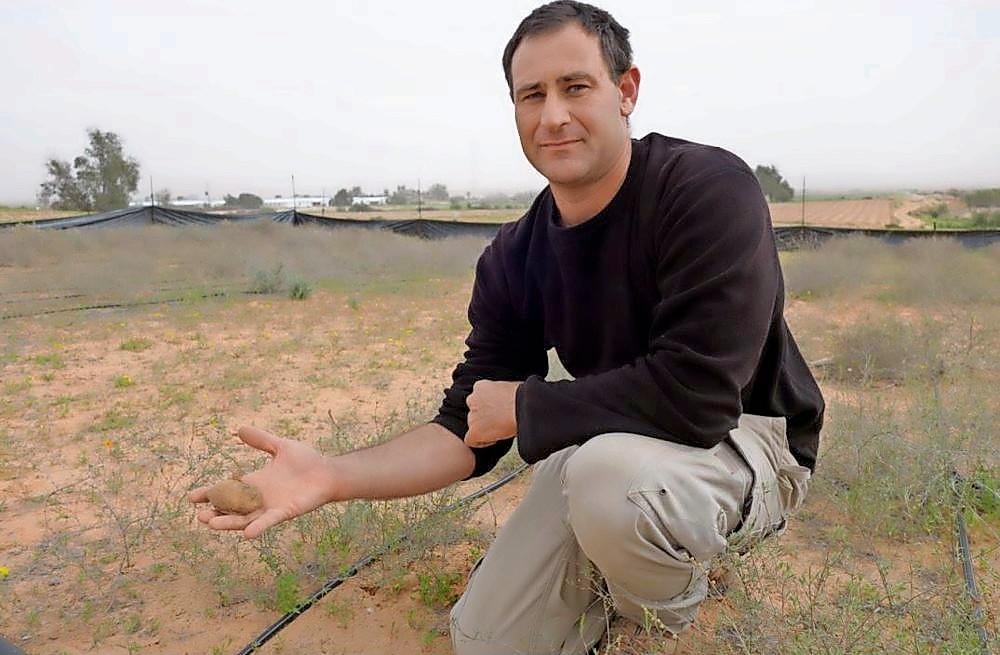Deserts have some hidden treasures waiting to be found
The association between both black and white truffles of genus Tuber and certain trees species was clearly noted early on.
Around 1790, the Frenchman Pierre Mauleon planted acorns from trees where truffles were being found in appropriate soil with a pH balance of between 7.5 and 8.3. A temperate climate without severe cold is also necessary.
Trees grown from those acorns where other trees produced black truffles produced their own black truffles.
Joseph Talon expanded the concept in 1808 by collecting seedlings growing beneath trees that were known producers, again of black truffles only. That method also yielded black truffles, and by the mid-1800s, there were black truffle orchards in France.
Black truffle (Tuber melanosporum) orchards are already in production in the United States, and anyone can now purchase inoculated English oaks, holly oaks and hazelnut trees. Although the white truffle (Tuber magnatum) grows in association with the same tree species as the black truffle, there has not yet been any success domesticating the white truffle.
An acre of truffle trees can produce 30 to 50 pounds of truffles, but it takes a minimum of five years before seedlings start yielding, reaching their peak in seven to 11 years.
Bare areas around the base of the tree, known as the “brule” or “burnt” area, is indicative of fungal growth that seemingly kills overlying vegetation. Adequate irrigation is important since each tree requires one inch of water per week.
With the truffles growing underground, it is necessary to use a specially trained pig or a dog to sniff them out. Truffle season is November to March.
Desert truffles display some similarities to the truffles discussed to this point.
They are the underground fruiting body (containing spores) of a fungus that grow in a symbiotic, mycorrhizal relationship with a plant, although here those plants are shrubby members of the Cistaceae family, sometimes called the rock-rose family. We will be particularly interested in the Helianthemum sessiliflorum.
Helianthemum is from the Greek helios meaning “sun,” and anthemon meaning “flower.” Sessiliflorum means flowers without stalks. The Hebrew name is shimshon yoshave, literally meaning “Samson is sitting.”
This was a common plant scattered throughout the Negev, which blooms in March and April with small, yellow flowers. It has suffered a population decrease due to drought and various human activities.
However, there are also differentiating characteristics. As the name “desert” indicates, they grow in arid and semi-arid regions around the Mediterranean basin. Arid areas receive variable rainfall, averaging between four and 12 inches yearly, supporting only sparse vegetation. Farming in these regions requires irrigation.
Semi-arid areas can support rain-fed agriculture with average yearly rainfall measuring between 20 and 52 inches.
While all truffles belong to the order Pezizales, the black and white truffles are from the family tuberacea, while desert truffles belong to the family terfeziaceae. Although some of desert fungi are gastronomically desirable, they do not command the prices paid for the white and black varieties.
Local populations have been collecting desert fungi for thousands of years without the aid of specially–trained animals. When the fruiting body is reaching maturity, they rise up slightly toward the surface, barely cracking the soil.
Locals have become expert in spotting these cracks, and by digging carefully around them, unearthing the truffles. The Hebrew name kmeha means “yearning for sunlight,” thus growing close to the surface.
Enter a team from Ramat Negev agro-research center who have been working on the cultivation of gastronomically desirable desert truffles for the last six years under Professor Yaron Sitrit from Ben Gurion University. Although Terfezia claveryi is being cultivated in Spain and the Middle East, this team has focused its attention on Terfezia boudieri.
In order to cultivate desert truffles, the Helianthemum plants must have their roots inoculated with the fungal mycelium. Inoculation already has been accomplished in the laboratory with the plants producing truffles once replanted in the outdoors. Inoculated plants have an increased probability of producing truffles.
An outdoor plantation can also have plants growing in greater density than that which naturally occurs. A local gathering in the wild state can collect 1 kilogram per 45 square kilometers.
The experimental plots are already yielding 15 kilograms in the same area size.
However, research takes time and considers many aspects of the transition from the lab to the farm. I spoke with researcher Ofer Guy, coordinator of the field aspects of the project.
Some of the questions that need to be answered before commercial planting can be done are:
• Can inoculation of the Helianthemum sessiliflorum plants be done successfully in the field, outside the laboratory?
• How many years will a Helianthemum plant produce truffles?
• With increased plant density, will plants require irrigation or fertilization?
As usual, nothing is simple!
Have a thought or comment for Sura Jeselsohn? Email her at greenscenesura@gmail.com.






